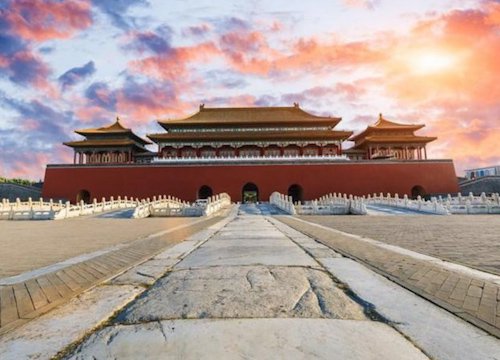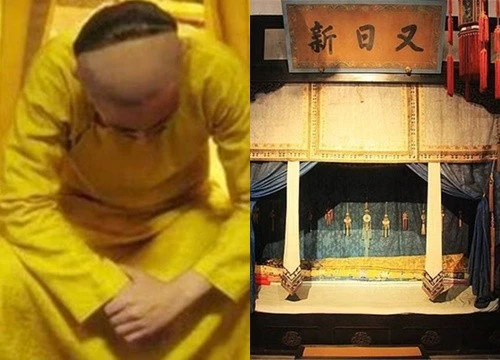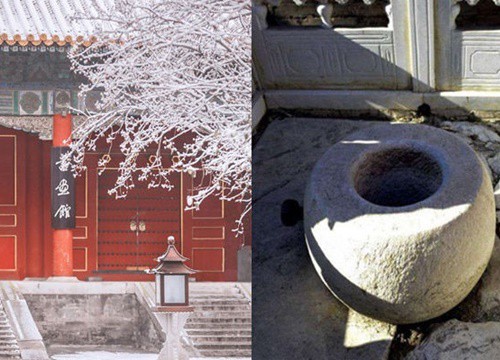Why is the Forbidden City still 'immortal' despite hundreds of fires?

3 | 0 Discuss | Share
The Domus Tiberiana Palace - built in the first century AD - reopened once again after a period of restoration, hoping to become one of the city's top tourist attractions.
The nearly 2,000-year-old Domus Tiberiana was the residence of the ancient city's Imperial-era rulers. The vast palace allows sweeping views of the Roman Forum below. The ancient palace is located on the Palatine Hill - where imperial dynasties ruled for centuries. However, over the years, the site fell into disrepair. In the 1970s, due to structural instability of some ruins, the Domus Tiberiana palace had to be closed.
After six years of renovations, including some done during the coronavirus pandemic when tourism was at a minimum for months, the palace has officially reopened to tourists. Frescoes are scattered throughout the site, giving visitors an insight into the ancient grandeur of the palace.
Domus Tiberiana was Rome 's first royal palace, built and named after Tiberius, who ruled the empire after the death of Augustus, but archaeological studies indicate that the palace's foundations date back to Nero's time, shortly after the fire of 64 AD which destroyed much of the city. Occupying more than 4 hectares, the palace has living quarters along large gardens, places of worship and rooms for the emperor's Praetorian guard.
Domus Tiberiana Palace holds a prime location, above the Palatine Square and the Roman Forum because this is the center of power and politics of Rome. Over time, the Domus had many changes when it was embellished and expanded by other emperors, including Emperor Nero, who was crowned at the age of 16 in 54 AD.
After the fall of the Roman Empire, the residence was abandoned for centuries, until, in the 1500s, the noble Farnese family developed a large garden around the ruins.
Mr. Alfonsina Russo - Director of the Colosseum Archaeological Park and the main archaeologist in the renovation said that many exceptionally well-preserved artifacts were unearthed during the project.
Mr. Russo added the artifacts - brightly colored frescoes, amphorae, pottery, looms, terracotta and holy statues related to the cults of Isis, Dionysius and Mithras. These will give visitors the feeling of experiencing a journey through time.
Thanks to those things, this palace, from the residence of noble families, to the residence of Roman emperors, gradually came alive again. There are seven exhibition rooms with special finds, starting with those dating back to the original construction of the palace when nobles lived in villas before emperor Tiberius introduced the Domus.
At that time, lemons were considered an exotic fruit in ancient Rome, because they were hailed from the Far East. The lemon appears in several frescoes displayed in the palace. Next to it are a number of photographs depicting gladiators, proving that gladiator games of this era were highly regarded by the wealthy, Russo explains.
The royal palace remained in use until the 7th century, as the residence of pope John VII. In the mid-16th century, the noble Farnese family - powerful local landowners - built the lavish Orti Farnesiani garden on the site, decorating it with ornaments and sculptures of nymphs, satyrs and fauns.
Mr. Russo added: "The palace is reminiscent of history. We have restored the Domus Tiberiana to its past glory, but there is much work ahead."
Indeed, constant efforts have been made to combine the old and the new. A series of majestic reddish-brown domes that greet visitors have been carefully rebuilt using the same materials that the ancient Romans used in the past.
Mr. Russo said that the renovated Domus palace became more unique thanks to its architectural style. Those who contributed to this innovation tried to use original materials for reinforcement, specifically manually reinforcing the 15m high front dome that runs along the palace's ancient stone floor.
This has certainly attracted public attention. Since reopening at the end of September, the Domus Tiberiana palace has attracted about 400,000 visitors, a "huge success," according to Mr. Russo, adding that the reopening of Domus Tiberiana will bring tourists guests the most "sexy" visit in generations.
Archaeologist and scholar of ancient Rome Giorgio Franchetti said that when reopening the Domus Tiberiana palace, Rome "recovered a forgotten gem".
"The Palatine Hill has always been the stage of power politics in Rome. Emperor Tiberius chose this destination to build his palace because it was his family's residence. There are not many destinations like the Domus Tiberiana palace Because here, you can find the breath of history in the past," Mr. Giorgio Franchetti said in an interview.
Prince of Thailand: Living in a lavish palace but being forced to leave his mother, in danger of losing the throne  Hoàng Anh13:17:30 21/08/2022The image of the little prince kneeling to say goodbye to his mother for the last time shocked the world in 2014 is probably still an image that haunts many people. From his birth Prince Dipangkorn Rasmijoti was identified as the heir to the throne. But life in the richest royal...
Hoàng Anh13:17:30 21/08/2022The image of the little prince kneeling to say goodbye to his mother for the last time shocked the world in 2014 is probably still an image that haunts many people. From his birth Prince Dipangkorn Rasmijoti was identified as the heir to the throne. But life in the richest royal...

3 | 0 Discuss | Share

3 | 0 Discuss | Share

2 | 0 Discuss | Share

6 | 0 Discuss | Share

4 | 0 Discuss | Share










4 | 1 Discuss | Report